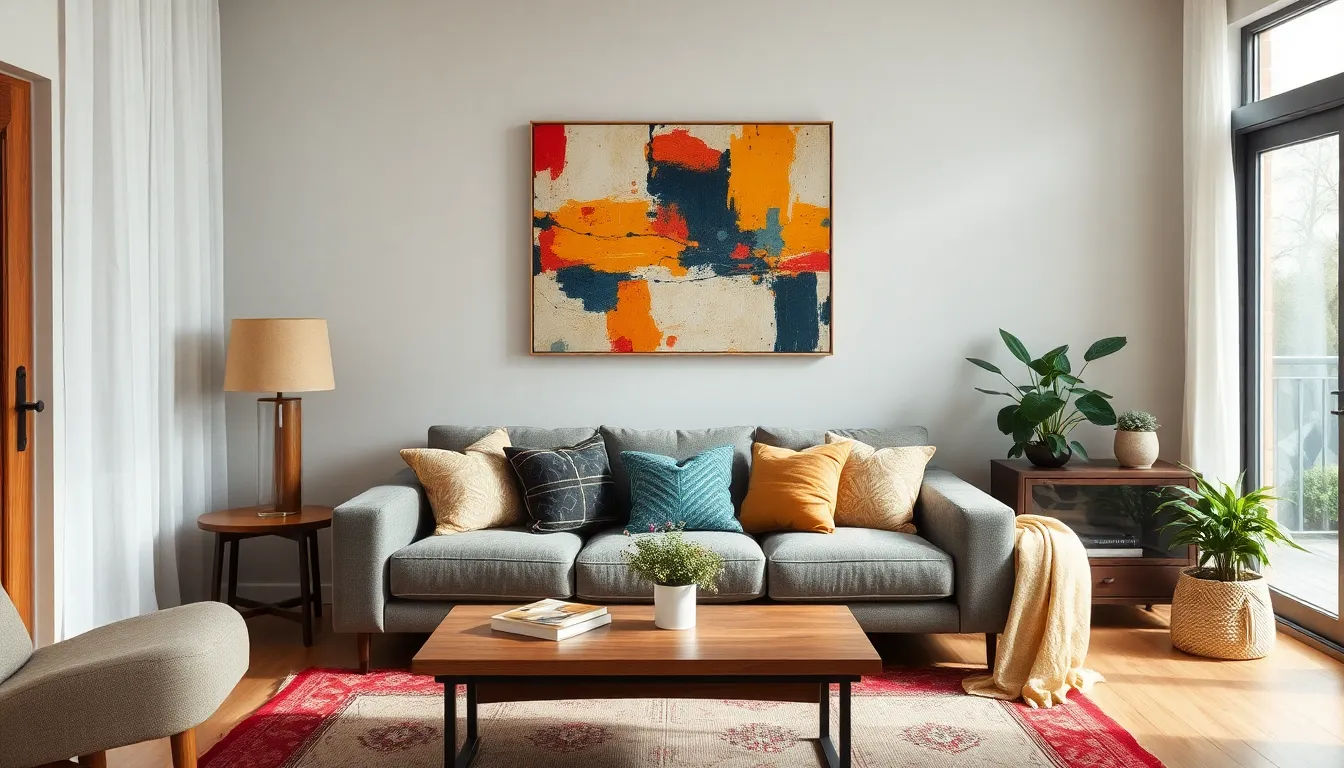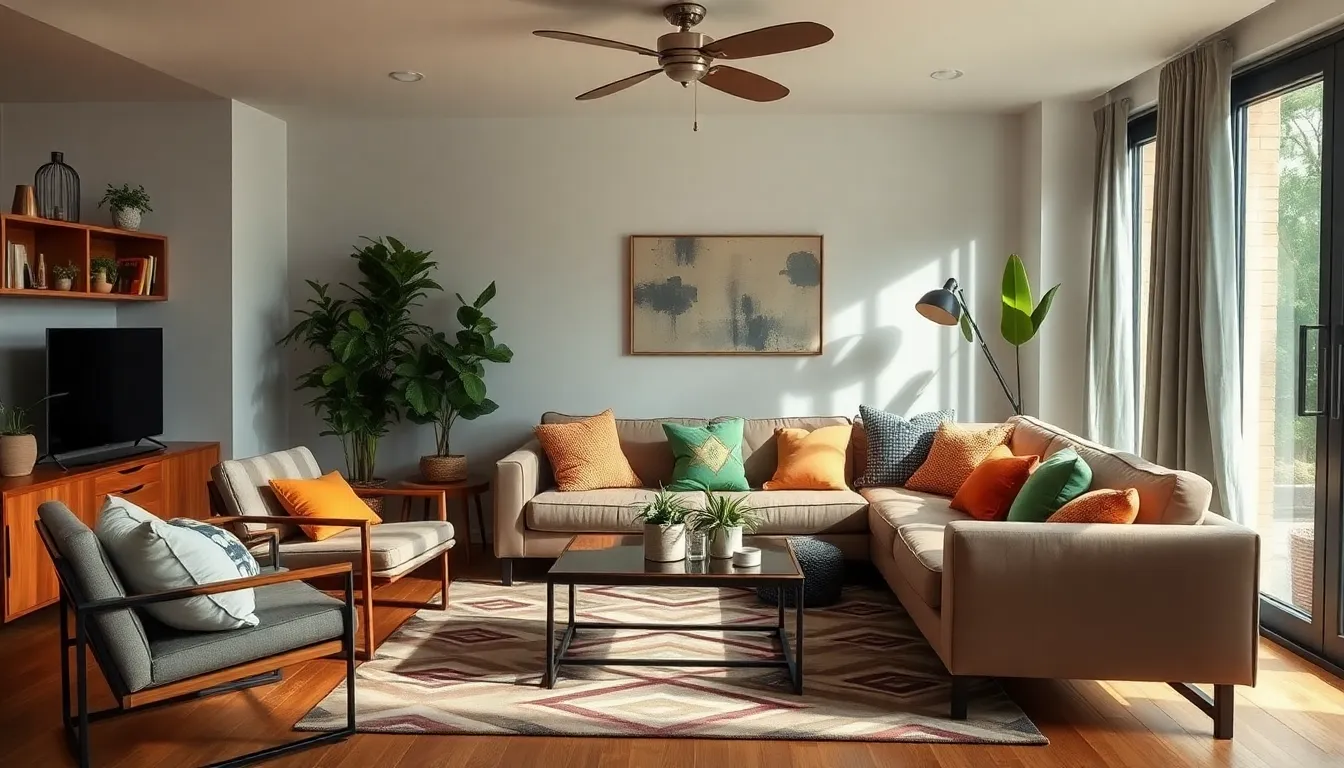Finding the perfect home style can feel like dating—sometimes it’s love at first sight, and other times it’s a series of awkward encounters. Whether it’s modern minimalism or cozy cottage vibes, aligning with a home style that reflects personal taste is key to creating a welcoming space.
Table of Contents
ToggleUnderstanding Home Styles
Home styles represent personal preferences and create a foundation for aesthetic choices. Identifying the right home style enhances the living environment, making it more inviting and reflective of individual taste.
Definition and Importance
A home style defines the architectural and interior design elements that characterize a residence. It encompasses aspects such as color palettes, furniture arrangements, and decorative details. Selecting a home style matters because it reflects personal identity and influences mood. An appropriate style fosters comfort, enhances functionality, and creates a cohesive look throughout the space. Ultimately, a well-chosen home style allows individuals to express themselves and enjoy their surroundings fully.
Common Home Styles
Numerous home styles exist, each offering unique characteristics. Modern minimalism features clean lines and an uncluttered look, emphasizing simplicity. Traditional style centers around classic designs with ornate details, invoking nostalgia. Farmhouse style, with its rustic charm, incorporates vintage elements and natural materials. Craftsman style showcases handcrafted elements and embraces earthy tones. Additionally, mid-century modern combines function with aesthetic appeal, highlighting retro designs. Each style has distinct attributes that cater to varying tastes and preferences.
Aligning Decor with Home Style


Aligning decor with home style enhances the aesthetic appeal of any residence. This approach ensures that each element contributes to a harmonious living environment.
Key Elements of Alignment
Color palette plays a crucial role in unifying decor. Choosing shades that reflect the chosen home style creates a cohesive look. Furniture selection matters as well; picking pieces that complement the overall theme enhances visual flow. Texture adds depth, so combining materials like wood and metal can create interest. Patterns should also be considered; incorporating prints that match the home style helps maintain consistency. Lastly, accessories such as artwork and plants contribute character, making the space feel inviting.
Tips for Cohesive Decor
Start with a focal point to anchor the room, such as a statement piece of furniture or art. Balance larger items with smaller decor for visual interest. Use symmetry to create a pleasing layout; aligning furniture can establish order. Add layers through textiles like rugs and cushions to soften the space. Incorporating a unifying motif, such as geometric patterns, can tie decor together effectively. Embrace personal touches to showcase individuality, ensuring the decor reflects personal style while remaining cohesive.
Choosing the Right Color Palette
Selecting the right color palette plays a significant role in aligning decor with home style. It enhances the overall atmosphere while reflecting personal taste.
Color Schemes for Different Styles
Modern minimalism thrives on neutral tones like whites, grays, and blacks. Traditional styles often embrace rich colors, such as deep reds and greens, paired with classic patterns. Farmhouse aesthetics typically showcase soft, muted shades, including pastels or earthy hues. Craftsman design highlights natural wood tones combined with warm jewel colors. Mid-century modern spaces feature bold color combinations alongside geometric patterns. Each style invites specific palettes that enhance its essence.
Psychological Impact of Colors
Colors influence emotions and perceptions profoundly. Blues often evoke calmness, promoting relaxation. Warm colors, like red and orange, can stimulate energy and enthusiasm. Greens offer a sense of tranquility, reminding individuals of nature. Geometric patterns in bright colors spark creativity and playfulness. Neutral colors enhance focus, supporting productivity. Understanding these psychological associations aids in choosing colors that reflect personal mood preferences and enhance lifestyle satisfaction.
Furniture Selection and Arrangement
Selecting furniture that aligns with home style creates a cohesive living space. Each piece reflects personal preference and contributes to the overall ambiance.
Matching Furniture to Home Style
Furniture choice should complement distinct home styles. Modern minimalism features sleek lines and understated designs, while traditional styles often showcase ornate details and rich materials. Farmhouse aesthetics favor comfort with rustic elements and natural finishes. Craftsman designs emphasize handcrafted furniture, highlighting unique wood grains. Mid-century modern spaces incorporate functional pieces with bold colors and retro shapes. Assessing each item’s compatibility with your chosen style ensures a unified aesthetic throughout the residence.
Optimal Furniture Layouts
Arranging furniture plays a crucial role in shaping the living experience. Start by considering the room’s purpose to determine an effective layout. Create conversational areas with seating that promotes interaction. Allow ample space for foot traffic, minimizing clutter. Symmetry often adds harmony to the arrangement, balancing larger pieces with smaller accents. Layering textiles, such as rugs and throws, adds warmth and character. Incorporate personal touches, such as artwork or plants, for an inviting atmosphere that reflects individual taste while maintaining functionality.



